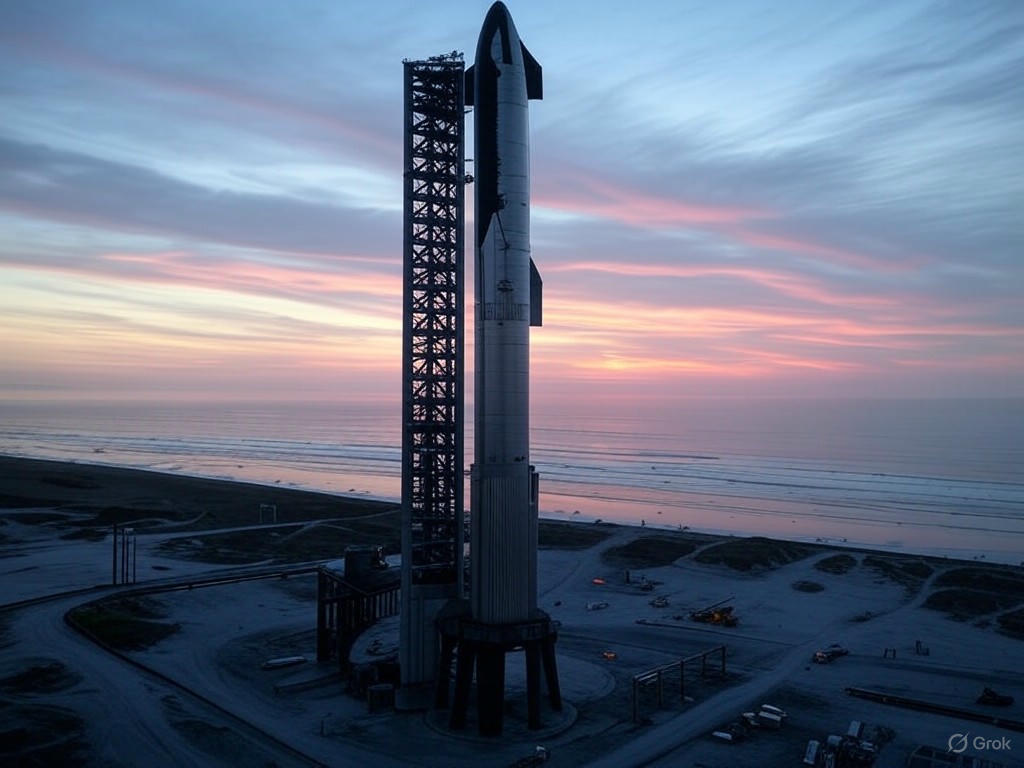SpaceX’s Starship Struggles: A Setback in the Quest for Reusable Rockets
SpaceX, the pioneering aerospace company led by Elon Musk, has hit a significant roadblock in its ambitious journey to revolutionize space travel. The latest test flight of the Starship, a spacecraft designed to be fully reusable and capable of carrying humans to Mars, ended in a dramatic failure. During the mission, both the Starship’s upper stage and its powerful Super Heavy booster suffered catastrophic explosions shortly after completing their respective objectives in orbit. This incident has raised fresh questions about the timeline for achieving Musk’s vision of interplanetary colonization and affordable space exploration.
The test flight, conducted recently, was intended to demonstrate the Starship’s ability to return safely to Earth for reuse—a critical component of SpaceX’s cost-cutting strategy. Reports indicate that the Super Heavy booster, which propels the Starship into orbit, disintegrated during its descent while attempting a controlled landing burn. Meanwhile, the upper stage of the spacecraft also failed to survive reentry, exploding before it could reach its designated landing zone. While SpaceX has not released an official statement detailing the causes of the explosions, experts speculate that issues with thermal protection, structural integrity, or engine performance during the high-stress reentry phase could be to blame. This setback marks another chapter in the challenging development of a spacecraft that aims to outshine even the legendary Saturn V rocket in power and versatility.
Despite the failure, it’s worth noting that SpaceX has a history of turning setbacks into stepping stones. The company’s iterative approach to engineering thrives on testing, failing, and learning. Each explosion, while visually spectacular and disheartening, provides invaluable data that engineers can use to refine the design. Previous Starship tests have also ended in fiery mishaps, yet SpaceX has consistently made progress, achieving milestones like successful orbital insertions and booster separations. The ultimate goal remains clear: to create a spacecraft that can ferry cargo and crew to the Moon, Mars, and beyond, all while drastically reducing the cost of access to space. NASA, which has partnered with SpaceX to use Starship for lunar missions under the Artemis program, is also closely watching these developments, as the spacecraft is pivotal to returning humans to the Moon by the end of the decade.
As the dust settles from this latest test, the space community is left wondering how long it will take SpaceX to overcome these hurdles. Critics argue that the repeated failures highlight the immense complexity of reusable rocket technology, while supporters emphasize that innovation often comes at the cost of trial and error. Elon Musk has previously stated that Starship’s development would be a marathon, not a sprint, and this incident reinforces that perspective. For now, SpaceX must analyze the wreckage—both literal and figurative—and chart a path forward. The dream of a multi-planetary future hangs in the balance, but if history is any guide, SpaceX’s determination will likely propel Starship back into the skies sooner rather than later.


